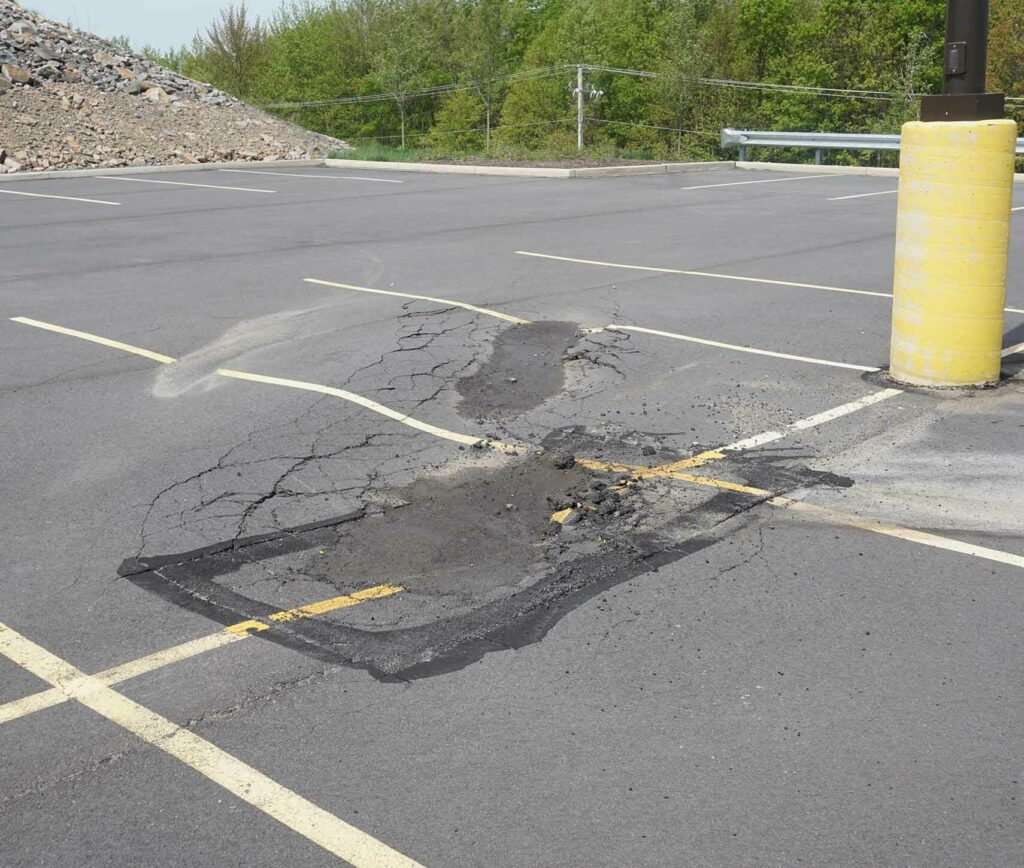According to the Pennsylvania Department of Conservation and Natural Resources, sinkhole occurrences are concentrated within central and eastern Pennsylvania, where large areas of land are underlain with carbonate bedrock.
As the bedrock becomes weathered over time, or through human involvement such as mining or the placement of utilities, the surface material subsides and results in what is referred to as a sinkhole.
What is Sinkhole Remediation?
Sinkhole remediation is an essential process that aims to repair sinkholes and ensure the safety of the surrounding area. Sinkholes can occur due to natural geological processes, human activity, and water erosion, which can lead to unstable ground and pose a significant risk to nearby structures and infrastructure. In response to such situations, sinkhole remediation services perform a comprehensive assessment of the cause of the sinkhole, followed by a plan to stabilize the ground and prevent further damage. The ultimate goal of sinkhole remediation is to repair the sinkhole effectively while maintaining the safety of the surrounding area.
Preventing Sinkholes

If you are familiar with the saying, “an ounce of prevention is worth a pound of cure,” the same could be said for sinkholes. Any damage or cracking of asphalt or concrete should be addressed as early as possible to prevent much more costly and time-consuming repairs. Making sure to address any areas where water begins ponding or is consistently flooding and removing underlying debris and repairing seals around catch basins is recommended as well.
Perhaps even more important than preventative maintenance, but much more difficult to account for once construction has taken place, is the surveying that needs to be performed on land prior to development that takes into account the property’s natural characteristics as well as the careful placement of utilities. In addition to the excavating that occurs in order to place utility lines, architects and engineers also need to consider how the square footage of built structures and paved surfaces, like parking lots, reduce the amount of surface area that can disperse storm water into the soil–and potentially, contribute to a lack of stormwater drainage.
Building construction may not be a factor that a current property owner or manager can account for, but knowing the history of the property may aid in forecasting any potential issues that may arise.
Process of Sinkhole Repair

The process of repairing a sinkhole may vary depending on the size, location and characteristics of the property where the sinkhole emerged.
For instance, commercial properties with a retention pond (sometimes also referred to as a “stormwater management pond” or “retention basin”) will need the assistance of a municipal engineer as townships typically monitor them.
The process typically involves an additional external geoscience engineer, contracted by the property owner or as a subcontractor to Evercor, to assess and provide a report with the best course of action for the repair.
Once the area has been assessed and a course of action determined, utility lines are mapped out in advance and excavation begins. Excavating continues until solid ground, or the prescribed depth contained within the engineer’s report is met.
Depending on the engineer’s recommendation and the original cause and characteristics of the sinkhole, the repair may involve plugging the hole with clean fill, rerouting the water drainage to provide a more long-term solution, or a combination of both methods. The entire repair process can vary from a few days to a few months depending on the size and severity of the sinkhole.